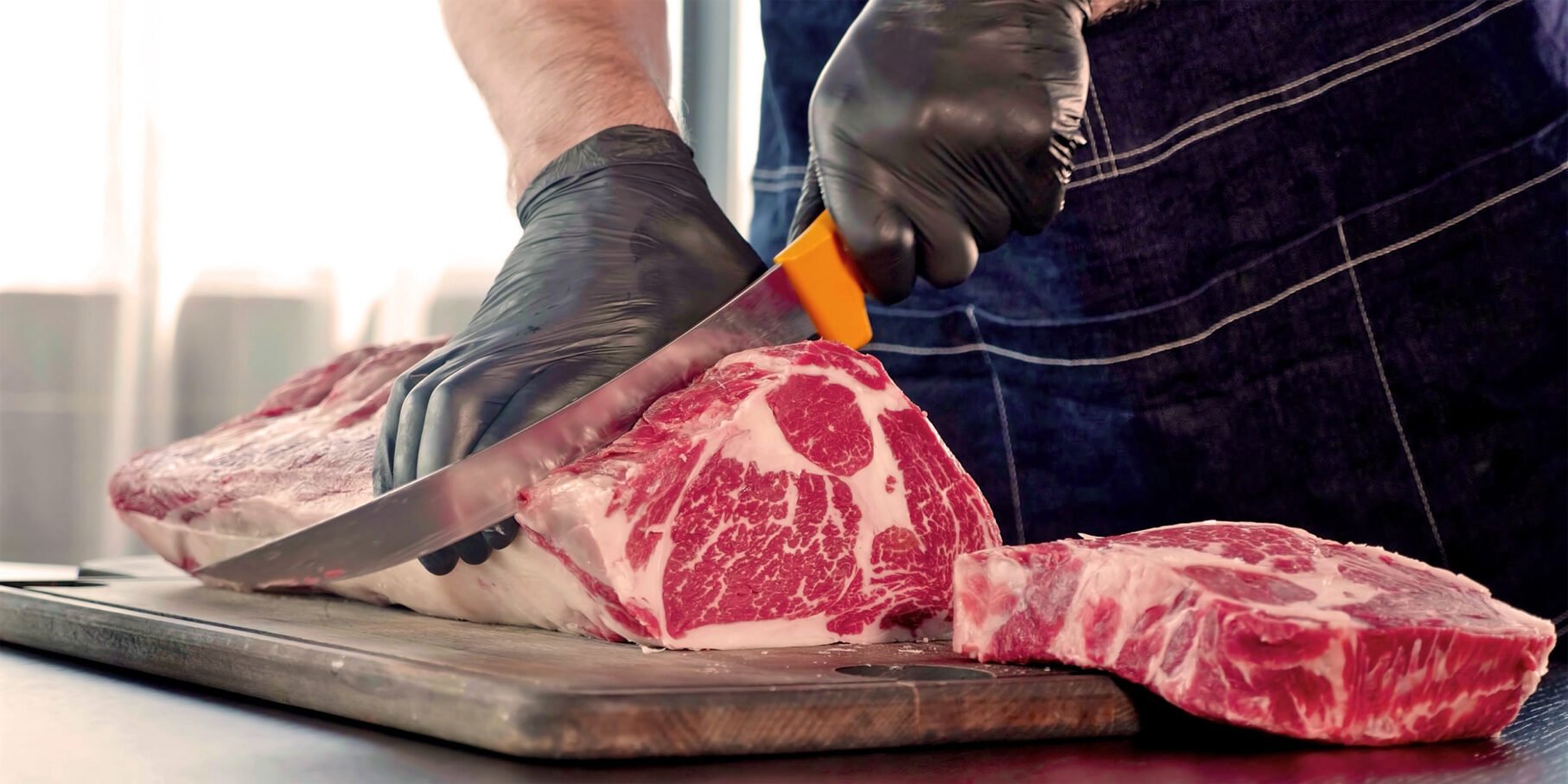
Food safety is a critical aspect of the food industry, and ensuring that gloves used in food handling and processing are up to par with safety standards is essential. In this article, we will delve into the details of migration testing for food safety of gloves, specifically nitrile gloves, according to Commission Regulation (EU) No 10/2011. We will discuss the importance of assessing the correct temperature and time of the test, the commonly used simulants, and the reasons behind different testing durations (10 minutes and 30 minutes).
What Does it Mean for Nitrile Gloves to be Food Safe?
The Role of Nitrile Gloves in Food Safety
Nitrile gloves are widely used in the food industry for their durability, chemical resistance, and ability to provide a barrier against harmful substances. The food safety logo means that the gloves have been thoroughly tested against a range of food simulants to ensure that the gloves do not emit harmful chemicals that could contaminate the food or cause adverse health effects during contact with food being handled. Unlike what you might think, the Food Safety logo does not say anything about the cleanliness of the gloves. To asses this, the gloves should be tested for their bioburden.
Migration Testing and Commission Regulation (EU) No 10/2011
Commission Regulation (EU) No 10/2011 is a European regulation that sets out the rules for food contact materials, including nitrile gloves. Migration testing is crucial to ensuring compliance with this regulation, as it assesses the potential transfer of chemicals from the gloves to the food.
The migration test involves subjecting the gloves to specific conditions that simulate actual food contacts, such as varying temperatures and contact times. The results are then compared to established limits, ensuring that any chemical migration from the gloves to the food does not exceed the acceptable levels for food safety.
Assessing the Correct Temperature and Time of the Test
Importance of Temperature and Time
The temperature and time of the migration test are vital factors, as they can significantly impact the results. Higher temperatures and longer contact times can lead to increased migration of substances from the gloves to the food simulants. Therefore, selecting the appropriate temperature and contact time for the test is crucial in obtaining accurate and relevant results.
Factors to Consider for Assessing Temperature and Time
To assess the correct temperature and time for the migration test, manufacturers must consider several factors, including:
- Intended use of the gloves: The conditions in which the gloves will be used (e.g., for handling hot or cold foods) will dictate the appropriate temperature for the test.
- Type of food to be handled: Different foods may have different chemical compositions and require different testing conditions.
- Duration of contact with food: The length of time the gloves will be in contact with food is an essential factor when determining the appropriate contact time for the test.
Considering these factors, manufacturers can select the appropriate temperature and contact time for the migration test, ensuring that the results accurately reflect real-world conditions.
Commonly Used Simulants in Migration Testing
Purpose of Simulants
Simulants are used in migration testing to mimic the properties of different types of food, allowing manufacturers to assess the potential migration of substances from the gloves to food in a controlled and standardized manner.
Types of Simulants
Some of the most commonly used simulants in migration testing for nitrile gloves include:
- 10% Ethanol: This simulant represents aqueous foods with low fat content, such as fruits and vegetables.
- 20% Ethanol: This simulant represents alcoholic beverages and other aqueous foods with intermediate fat content.
- 50% Ethanol: This simulant represents high-alcohol-content beverages and aqueous foods with high fat content.
- Vegetable oil: This simulant represents fatty foods, such as oils and fats.
- 3% Acetic Acid: This simulant represents acidic foods, such as vinegar-based products.
Using these simulants, manufacturers can evaluate the potential migration of substances from the gloves to various types of food, ensuring that the gloves meet the necessary safety standards.
Representing the Worst Foreseeable Contact with Food
The Importance of Worst-Case Scenarios
The migration test should always represent the worst foreseeable contact with food to ensure that the gloves meet the highest safety standards even under the most challenging conditions. By testing the gloves under extreme conditions, manufacturers can be confident that the gloves will provide adequate protection in real-world situations.
10-Minute vs. 30-Minute Tests
Some nitrile gloves are tested for 10 minutes, while others are tested for 30 minutes. The choice of test duration depends on the intended use of the gloves and the specific requirements of the relevant regulations.
A 10-minute test may be sufficient for gloves used in short-duration tasks, such as quick food handling or preparation activities. In contrast, a 30-minute test may be necessary for gloves used in longer-duration tasks or in situations where the gloves may be exposed to higher temperatures or more aggressive food simulants.
By considering the intended use of the gloves and the specific requirements of the applicable regulations, manufacturers can choose the appropriate test duration to ensure the gloves meet the necessary safety standards.
Conclusion
Migration testing for food safety of gloves, particularly nitrile gloves, is essential to ensure that these gloves do not pose any risks to the food being handled or the person wearing them. By carefully assessing the correct temperature and time of the test, using appropriate food simulants, and testing under worst-case scenarios, manufacturers can ensure that their gloves meet the high safety standards set by Commission Regulation (EU) No 10/2011 and other relevant regulations. Whether a 10-minute or 30-minute test is used depends on the intended use of the gloves and the specific requirements of the applicable regulations. By adhering to these guidelines, manufacturers can provide food-safe gloves that protect both the food and the individuals handling it.
